Phone / tablet reset - how to return Android to factory settings
Resetting your Android device can be a solution when you’re facing persistent error messages or system issues, like apps crashes or slow performance. It’s especially useful when you can’t troubleshoot problems or when you want to wipe all data, for instance, when transferring the device.
Discover in this detailed article the step-by-step process for performing a factory reset on your Android device, whether it’s through the Settings menu or from the Recovery Mode.
Understanding Factory Reset
Restoring the Android system to factory settings involves deleting all the content that was added after the operating system was initially installed. This includes all data in the internal memory, such as pictures, photos, applications, settings made to the operating system, the status of basic applications, contacts saved in the phone, messages, and essentially every piece of data stored on the device.
Hence, before following the instructions in this tutorial, if you wish to preserve your existing data on the phone, it’s essential to create a backup of them. Otherwise, they will be permanently deleted, with no possibility of recovery.
To back up your data you will have to use a specialized application that can save the data to a memory card, a computer, or on online storage services such as your Google account. One example of such an application is Super Backup, but there are many others available on the Google Play Store that can serve the same purpose.
Getting ready for the Reset
Before you begin, take the following precautions:
- Backup your data: Ensure that all data you want to keep is securely backed up to an external memory card, a computer, or your Google account.
- Charge your device: Make sure your device has an adequate power level, ideally above 80 or more, and connect it to a power source using the charging cable.
- Review data deletion: Before proceeding, review the list of data types that will be deleted from the phone’s internal memory during the factory reset.
- Explore alternative reset options: Options such as “Reset All Settings,” “Reset Network Settings,” and “Reset Accessibility Settings “may allow you to address specific issues without deleting all data.
These precautions are essential to avoid data loss and interruptions during the factory reset process.
Standard Method: Resetting to factory settings when your device is functional
The simplest method to initiate a device reset is to access the reset option within the Android operating system. However, it’s important to note that this assumes that the system can still be accessed and is functioning properly.
1. Accessing the Reset Menu
The location of the factory reset menu varies depending on the device manufacturer and Android version. This is why the quickest method to locate the reset menu is by conducting a search, such as ‘reset’ or ‘erase’ within the Settings menu.
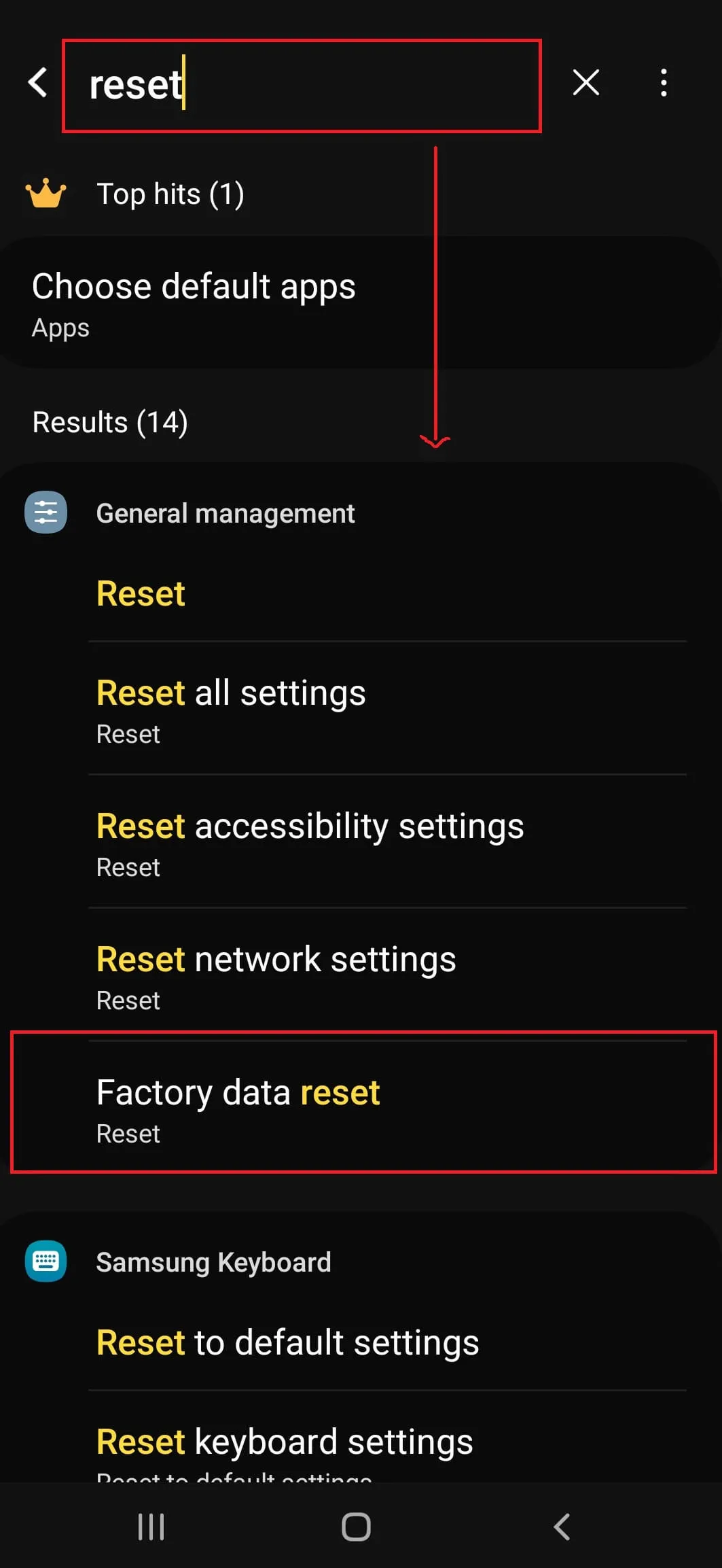
General ways of accessing the reset option include these paths:
- Settings → General Management → Reset → Factory Data Reset
- Settings → System → [Advanced] → Reset → Erase all data / Factory data reset
- Settings → System → Backup & Reset → Factory data reset
- Settings → Privacy → Factory reset → Reset phone / Reset tablet → Erase everything
- Settings → SD card & phone storage → Factory data reset → Reset phone / Reset tablet → Erase everything.
- Settings → Accounts → Backup and reset → Factory data reset → Reset device → Delete all
2. Exploring available Reset Options
Before performing a factory reset, you may want to consider alternative reset options such as “Reset All Settings,” “Reset Network Settings,” and “Reset Accessibility Settings.”
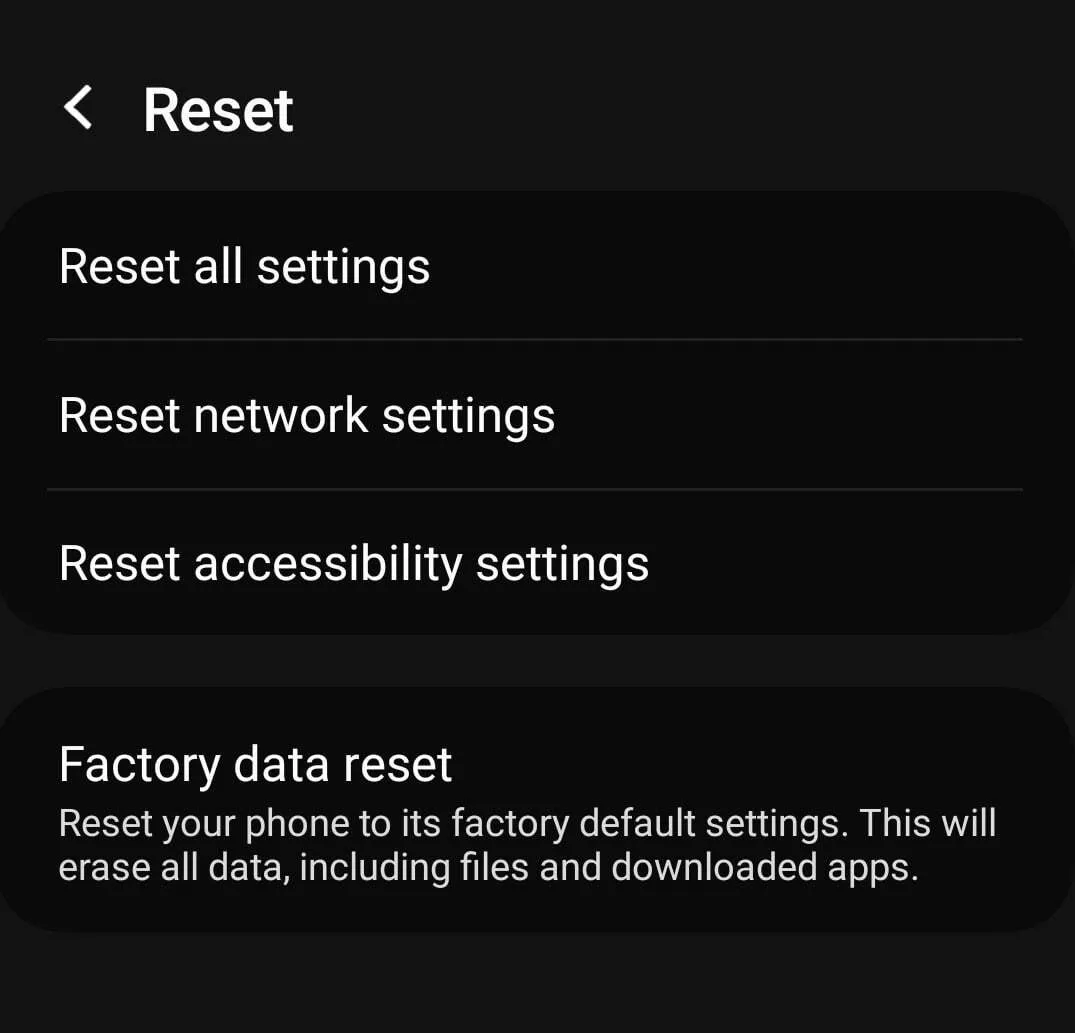
These options often allow you to reset specific aspects of your device’s configuration without deleting all of your data. Be sure to explore these alternatives if a full factory reset is not necessary for your specific situation.
Reset all settings:
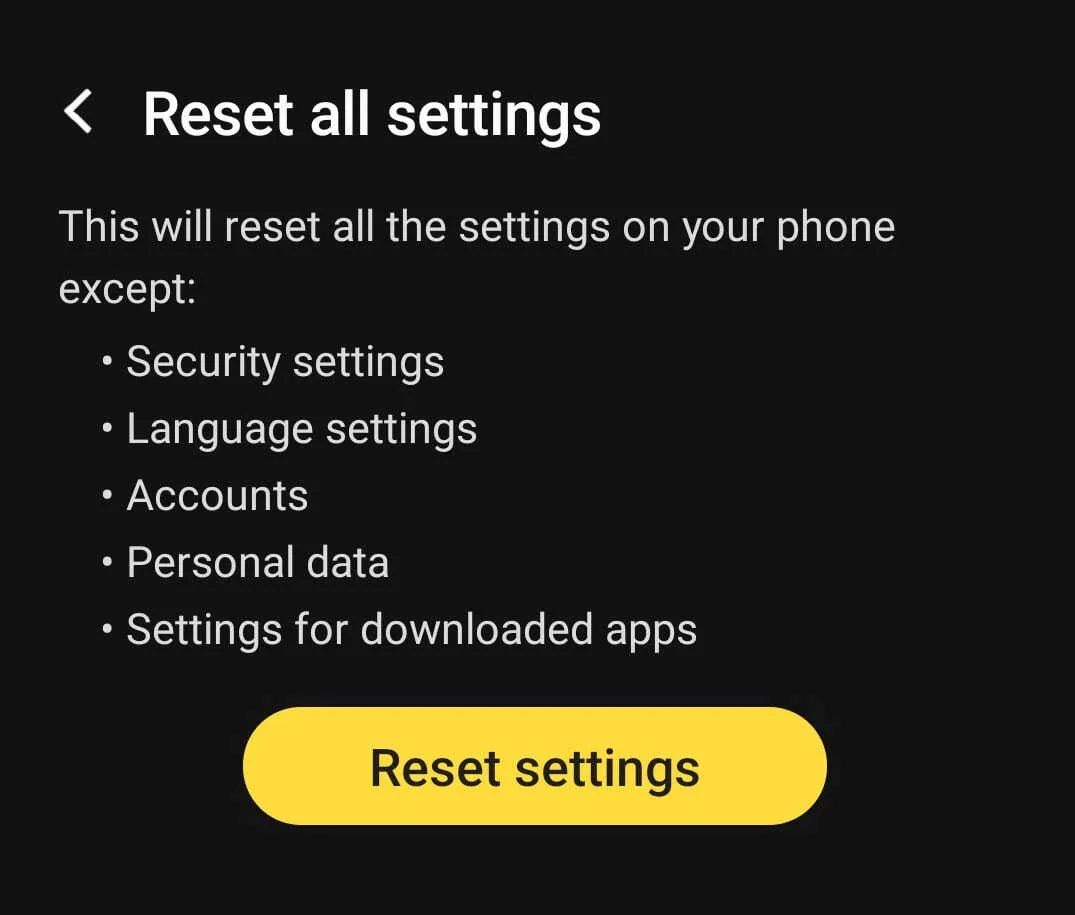
Reset network settings:
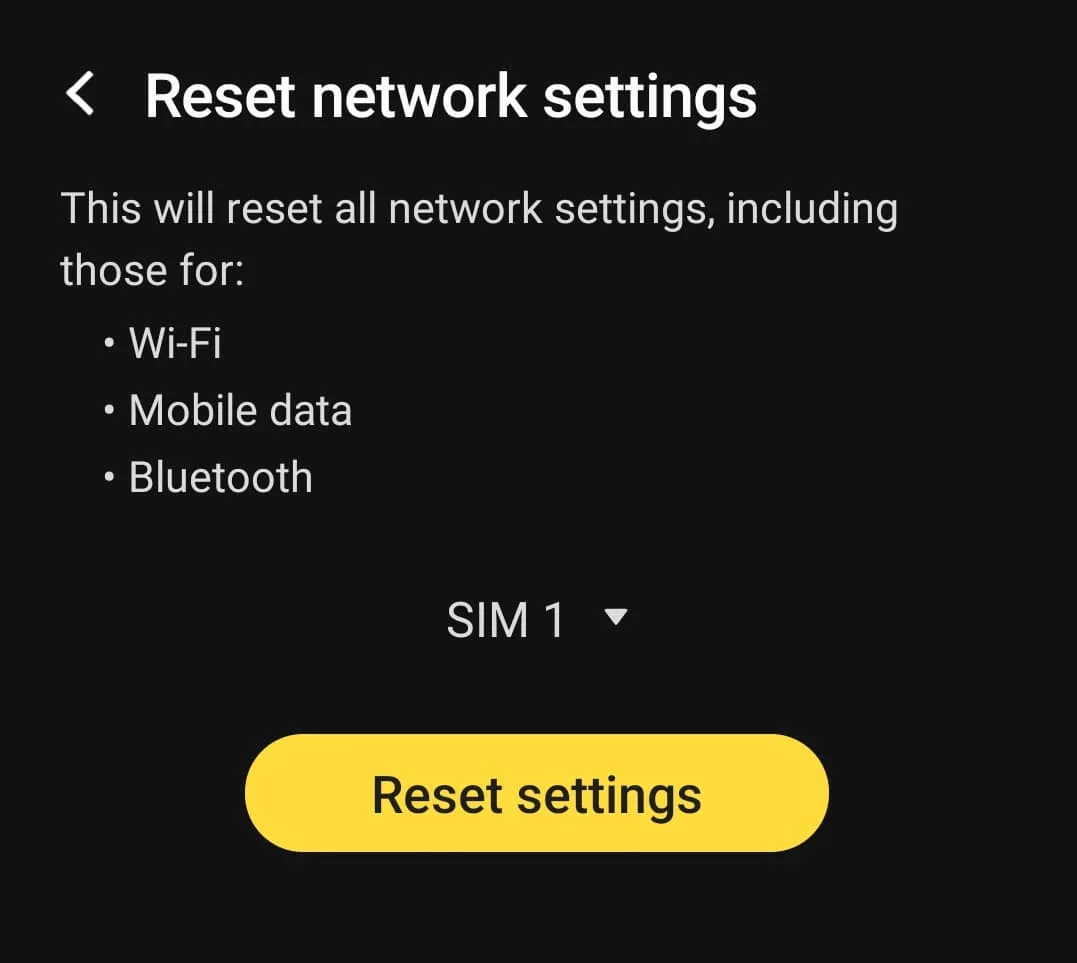
Reset accessibility settings:
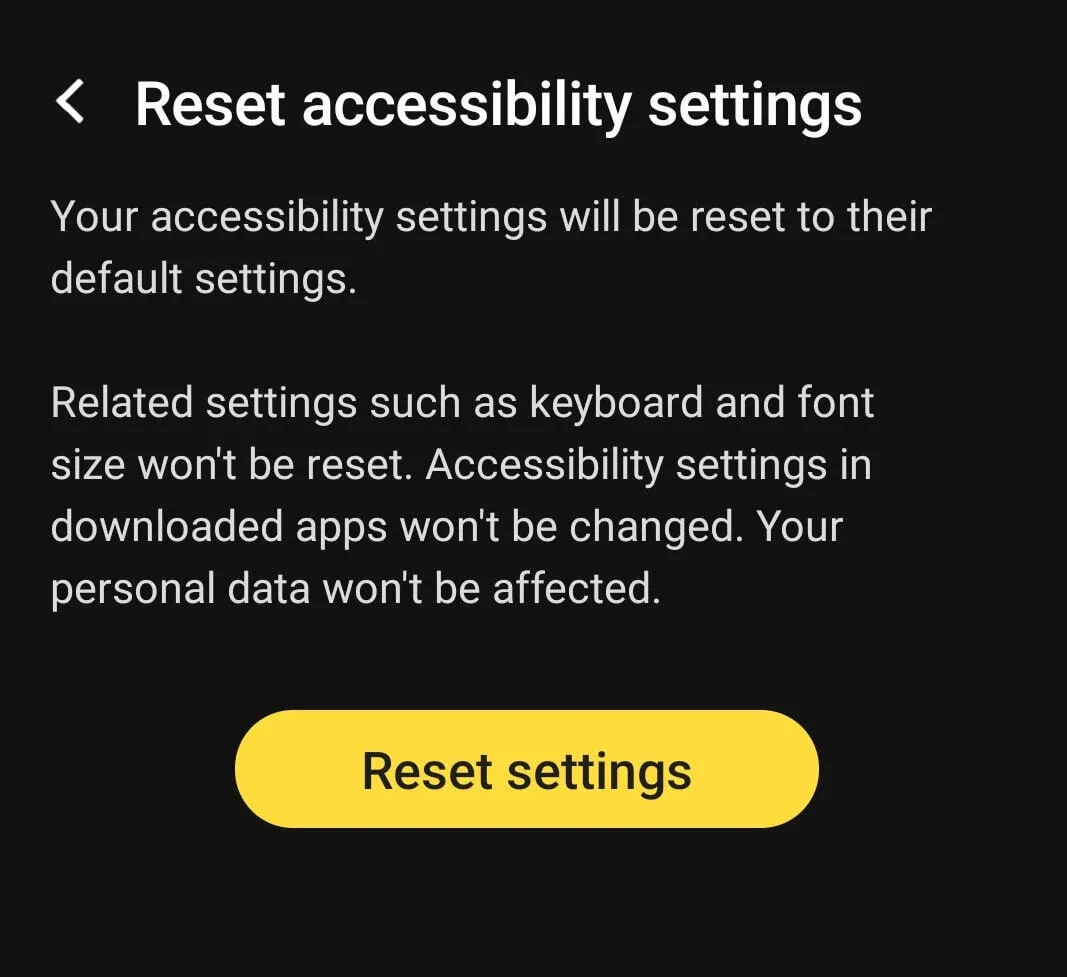
3. Performing the Factory Reset
Select the Factory data reset option, review the list of data types that will be deleted from the phone’s internal memory (as shown below), and then tap “Reset”.
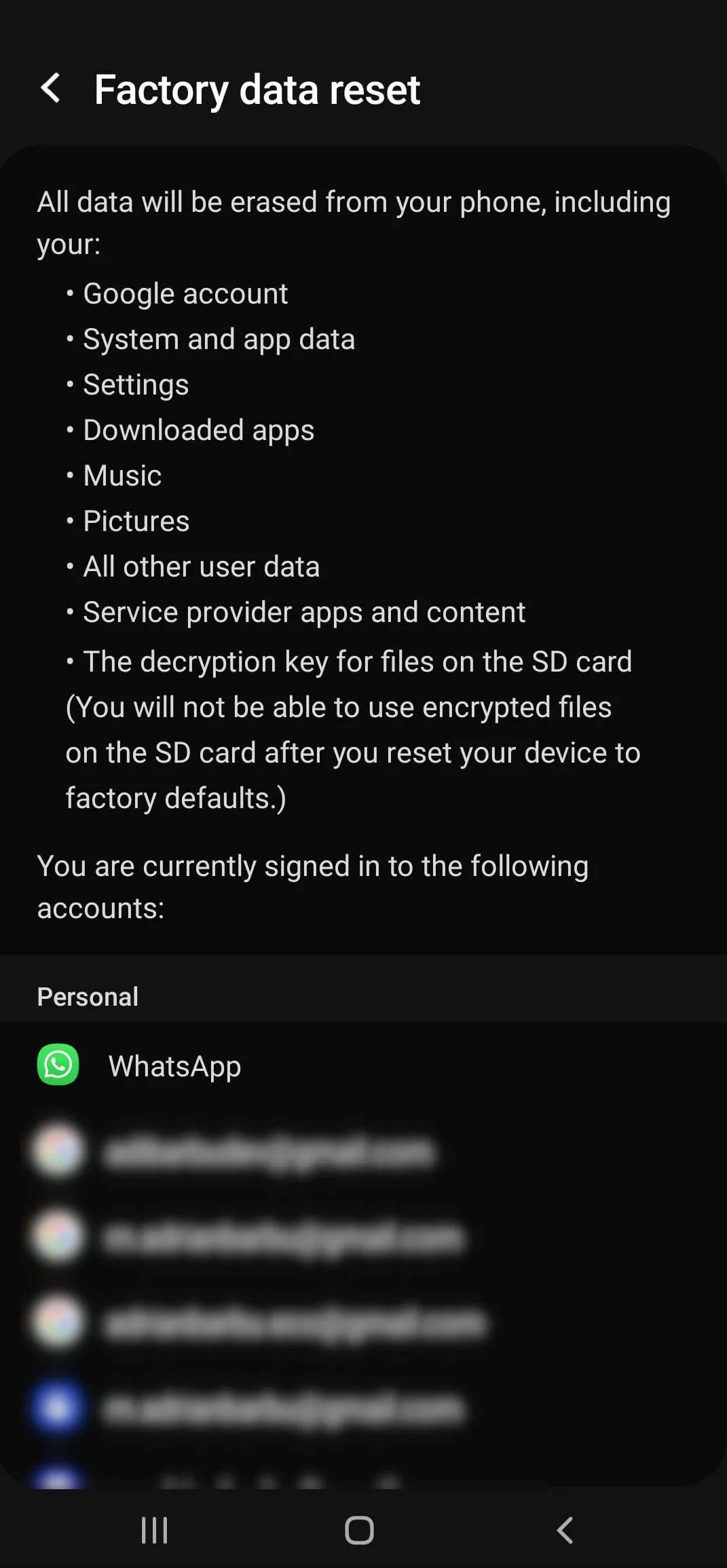
To confirm the reset operation, press the “Erase Everything” button.
After initiating the factory reset, your device will restart, and it may take longer than usual.
Once the reset process is complete, you will be presented with a menu for configuring basic system preferences. This menu allows you to set various options, including date and time, language, user name, and other essential information. Some of these settings may be optional and can be skipped if not needed.
Alternative method: Hard resetting to factory settings when your device freezes or stops responding
This method is particularly valuable when your phone or tablet encounters various issues that prevent it from loading the Android operating system or when it becomes unresponsive, making it impossible to access the reset menu within the system.
In such critical situations, performing a factory reset serves as an essential troubleshooting solution to resolve software-related problems and restore the device to a functional state.
1. Powering off your device
Start by turning off your device. If it’s possible to shut it down normally, go ahead and do so by pressing and holding the power button, then selecting “Power off” or “Shut down.”
If your device is unresponsive and cannot be shut down normally, follow these steps:
For devices with removable batteries:
- Open the back cover of your device.
- Remove the battery to completely power it off.
For devices with non-removable batteries:
- Unplug the device from the power source (if applicable).
- Wait for the device to drain its battery completely until it turns off.
2. Entering Recovery Mode
To initiate the device in the Recovery Mode, you can use one of the button combinations from below.
Volume Up Key + Home/Start (if applicable) + Power Button:
- Press and hold the Volume Up key.
- If your device has a physical Home or Start button, press and hold it as well.
- Simultaneously, press and hold the Power button.
- Keep holding these buttons until the device logo appears, and then release them.
Volume Down Key + Power Button:
- Press and hold the Volume Down key.
- Simultaneously, press and hold the Power button.
- Continue holding both buttons until the device logo appears, and then release them.
Home/Start Key (if applicable) + Power Button:
- Press and hold the Home or Start button (if your device has one).
- Simultaneously, press and hold the Power button.
- Keep holding both buttons until the device logo appears, and then release them.
3. Performing the Hard Factory Reset
In the Recovery Mode menu, the path to initiate the reset, often labeled as “Factory reset,” may vary slightly depending on your device’s manufacturer and Android version. However, a common way to do the reset is as follows:
Wipe Data / Factory Reset:
- Within the Recovery Mode menu, look for an option labeled something like “Wipe Data,” “Factory Reset,” or “Reset.”
- Use the volume buttons to navigate through the menu, and the power button (or another designated button) to select the option.
Confirm the Reset:
- After selecting the “Wipe Data” or “Factory Reset” option, you will likely be asked to confirm your decision.
- Confirm that you want to proceed with the factory reset. This action will erase all data on your device.
Wipe Cache (Optional):
- If you see a separate option for “Wipe Cache” and you wish to clear the cache as well, you can select it.
- Wiping the cache can sometimes resolve certain performance issues, but it’s optional and not necessary for the factory reset.
Reboot the Device:
- Once the factory reset is complete, you will typically see an option to reboot your device.
- Select this option to restart your device, which will now be restored to its factory settings.
What to do after the Reset
Once the factory reset is finished, your device will automatically restart. At this point, you will need to follow the initial setup steps, similar to when you first acquired the device. This includes configuring settings such as:
- Language: Choose your preferred language.
- Wi-Fi: Connect to a Wi-Fi network if required.
- Google Account: Sign in with your Google account or create a new one.
- Date and Time: Set the correct date and time.
- Security: Configure security options, such as screen lock methods (e.g., PIN, pattern, fingerprint, or face recognition).
- Device Name: Give your device a name if prompted.
Once you’ve completed these setup steps, your device should be ready to use with its factory settings restored. Remember to reinstall apps and restore any data you backed up before the factory reset.
